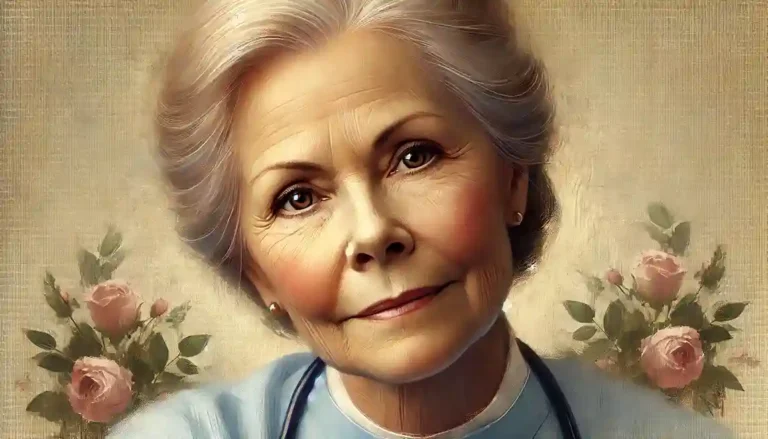Myra Estrin Levine, a distinguished nurse theorist, is best known for developing the Conservation Model of Nursing, which focuses on promoting patient adaptation and conserving energy to enhance well-being.
Her model emphasizes the importance of holistic, patient-centered care and resource preservation, shaping modern nursing practice by guiding nurses in making efficient and effective clinical decisions.
In this article, we cover Myra Levine’s life, achievements, philosophy, and lasting impact on modern nursing.
Quick Summary
- Developed the Conservation Model of Nursing, which highlights four conservation principles essential to patient care.
- Advocated for energy efficiency, holistic care, and patient adaptation in nursing interventions.
- Published influential works on nursing theory, clinical practice, and patient recovery.
- Contributed to nursing education by integrating scientific principles with bedside care.
- Recognized globally for her impact on patient-centered nursing and resource conservation in healthcare.
Early Life and Background of Myra Levine
Birth and Family Background of Myra Levine
- Myra Estrin Levine was born in the United States and grew up in a family that valued education, science, and healthcare.
- Her early interest in biology, human adaptation, and clinical care influenced her nursing career.
Education and Early Influences in Levine’s Life
- Levine pursued a Bachelor of Science in Nursing (BSN) and later advanced her studies in nursing theory and practice.
- She was influenced by systems theory, physiological adaptation, and the need for conserving resources in healthcare.
- Inspired by the challenges of acute and chronic illness care, she developed a model that prioritizes conservation while optimizing patient outcomes.
Myra Levine’s Philosophy and Vision for Nursing
- Levine believed that nurses should focus on conserving a patient’s energy and resources while promoting adaptation.
- Her vision emphasized four core conservation principles to guide nursing practice.
- Famous quote: “Nursing is a human interaction that fosters conservation and adaptation.”
Myra Levine’s Education and Early Nursing Career
Formal Education and Nursing Training of Myra Levine
- Levine’s academic journey combined nursing, physiology, and systems thinking, shaping her unique approach to patient-centered nursing care.
- She focused on integrating scientific knowledge with compassionate, efficient patient care.
Early Professional Experiences in Levine’s Career
- Levine worked as a clinical nurse, educator, and researcher, where she observed the importance of conserving patient energy and resources.
- Her work in critical care, rehabilitation, and long-term patient care reinforced her belief in adaptive, conservation-based nursing interventions.
Key Achievements and Contributions of Myra Levine
Development of the Conservation Model of Nursing
- The Conservation Model is based on four fundamental principles:
- Conservation of Energy – Helping patients maintain physical and mental energy levels.
- Conservation of Structural Integrity – Preventing physical breakdown and promoting healing.
- Conservation of Personal Integrity – Supporting emotional well-being and self-identity.
- Conservation of Social Integrity – Encouraging social interactions and relationships.
- The model is widely applied in acute care, rehabilitation, and chronic disease management.
Contributions to Nursing Education and Curriculum Development
- Levine’s model has been integrated into nursing curricula, teaching future nurses about efficiency and patient-centered care.
- She developed structured assessment tools to help nurses apply conservation principles in clinical practice.
Research and Theoretical Advancements
- Levine’s research explored how nurses can minimize unnecessary interventions while maximizing healing.
- Her work provided scientific justification for holistic nursing approaches that prioritize conservation and adaptation.
Global Impact and Recognition
- The Conservation Model has been adopted internationally in nursing education, acute care, and rehabilitation settings.
- Levine has received recognition for her role in advancing patient-centered nursing and optimizing healthcare resource use.
Overview of Myra Levine’s Conservation Model
- The model helps nurses design interventions that conserve a patient’s energy, structure, and integrity.
- By promoting efficiency and adaptation, it improves patient resilience and recovery outcomes.
Notable Publications by Myra Levine
- Introduction to Clinical Nursing – A foundational text on applying the Conservation Model in practice.
- Holistic Nursing: Integrating Science and Humanism – Explores the balance between scientific nursing care and patient-centered practice.
- Numerous articles on energy conservation, adaptation, and holistic nursing interventions.
Challenges and Criticisms of Myra Levine’s Work
Challenges in Implementing the Model in Fast-Paced Healthcare Settings
- Some critics argue that modern hospitals focus more on interventions than conservation.
- Levine emphasized that resource-efficient nursing leads to better patient recovery and reduced hospital strain.
Criticism of the Model’s Broad Scope
- Some scholars believe that the conservation principles are too generalized for specific medical conditions.
- However, Levine argued that the model’s flexibility allows it to be applied in various healthcare settings.
Timeline of Major Milestones in Myra Levine’s Life
- 1920s: Born in the United States.
- 1940s: Completed nursing education and began clinical practice.
- 1960s: Developed the Conservation Model of Nursing.
- 1970s-1980s: Published key research on nursing efficiency, patient adaptation, and conservation principles.
- Present: Continues to influence nursing education and patient-centered care.
Legacy and Lasting Impact of Myra Levine
Impact on Nursing Practice and Patient Care
- Levine’s model has transformed how nurses assess patient needs and optimize care interventions.
Global Influence and Recognitions
- Her work is widely used in healthcare systems and nursing programs worldwide.
- She has been honored for her contributions to nursing theory, clinical practice, and resource-efficient patient care.
Conclusion
Myra Levine’s Conservation Model has revolutionized nursing by emphasizing adaptation, energy conservation, and holistic well-being.
Her work continues to shape nursing education, clinical decision-making, and patient care strategies worldwide.


